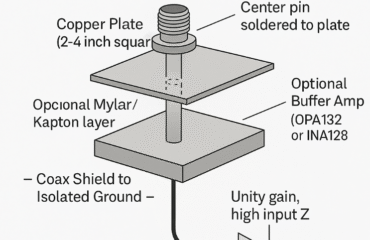
Low Probability of Intercept
🛰️ Understanding Low Probability of Intercept (LPI) Radar: Stealthy Detection Technology
Imagine you’re a 🕵️ detective in a high-stakes game of cat and mouse, trying to spot a suspect without them knowing you’re watching. In the military world, this is the essence of Low Probability of Intercept (LPI) radar — a technology designed to detect targets like enemy planes or ships while staying hidden from their sensors.
It’s a fascinating blend of 🔬 science, ⚙️ engineering, and 🧠 strategy. This blog post breaks it down in everyday terms. Whether you’re a tech newbie or just curious, you’ll walk away understanding how this stealthy radar works and why it’s so cool.
📡 What is LPI Radar?
Radar, at its core, is like a super-powered 🔦 flashlight that uses radio waves to “see” objects far away. Traditional radar blasts out strong, predictable signals. The problem? Those are easy for enemies to spot — like shouting in a quiet room 📢👂.
LPI radar flips the script. It’s designed to see without being seen, using sneaky techniques to keep its signals subtle and hard to notice.
Think of LPI radar as a whisper in a noisy crowd 🤫🎉 — clever and nearly impossible to pick out.
🧰 Techniques for Stealthy Detection
LPI radar relies on a toolbox of methods to avoid detection. Here’s how it works — with simple analogies:
1. 🔋 Low Power: Whisper, Don’t Shout
📖 What it is: Uses low peak and average power (weaker signals spread out over time).
🧠 Why it works: Faint signals are harder to detect — like whispering in a loud café.
🎯 Real-world example: Imagine trying to hear someone murmur across a busy room.
2. 🌈 Wide Bandwidth: Blend In Like a Chameleon
📖 What it is: Signal is spread over a broad range of frequencies.
🧠 Why it works: Looks like harmless background noise.
🎯 Real-world example: Like a chameleon blending in with its surroundings 🦎 or a white noise machine 🔊 masking specific sounds.
3. 🔀 Frequency & Modulation Variability: Change the Code
📖 What it is: Constantly changes frequency and modulation patterns.
🧠 Why it works: Prevents enemies from locking onto a consistent signal.
🎯 Real-world example: Like a spy 🕵️ swapping secret codes constantly.
4. 🔦 Antenna Patterns: Focus Like a Flashlight
📖 What it is: Signal is shaped into a tight beam using special antenna designs.
🧠 Why it works: Reduces “side lobes” (stray signal leaks).
🎯 Real-world example: Like a flashlight with a narrow beam — hard to notice from the side.
5. 🧍♂️ Scan Patterns: Move Like a Sniper
📖 What it is: Scans in short, random bursts instead of sweeping predictably.
🧠 Why it works: Unpredictable movement makes it hard to catch in action.
🎯 Real-world example: Like a sniper 🎯 who moves after every shot.
6. 🎚️ Power Management: Adjust the Volume
📖 What it is: Only uses as much power as needed based on the situation.
🧠 Why it works: Avoids unnecessary emissions.
🎯 Real-world example: Like turning down the radio when you’re sitting right next to it 🎧.
7. 🧬 Modulation Techniques: Speak in Different Languages
📖 What it is: Uses LFM, FSK, PSK, and other complex modulations.
🧠 Why it works: Makes the signal harder to detect or jam.
🎯 Real-world example: Like switching languages or accents mid-conversation 🗣️🧏♂️.
8. 🔍 Pulse Compression: Sharpen the Image
📖 What it is: Processes long, low-power signals into detailed radar images.
🧠 Why it works: Keeps the radar effective while staying hidden.
🎯 Real-world example: Like enhancing a blurry photo 📷 to see details without brightening it.
🪖 Real-World Applications
🎯 Military Use:
- Stealth missions: Fighter jets ✈️ and naval ships 🚢 track threats without being seen.
- Electronic warfare: Hard to jam or trace — stays elusive.
🌍 Civilian and Scientific Use:
- Wildlife monitoring: Scientists can track animals 🦌 without disturbing them.
- Medical imaging: Low-power radar may inspire safer tools for patients 🏥.
🧠 Conclusion
LPI radar is the invisible ninja of the detection world — whispering, shape-shifting, blending into the noise, and disappearing before it’s caught.
🔧 It uses smart physics, stealthy engineering, and strategic scanning to observe without being observed.
Next time you hear “radar,” don’t just think of loud airport beeps — remember the quiet genius that’s changing the game of surveillance, detection, and defense 🌐.

